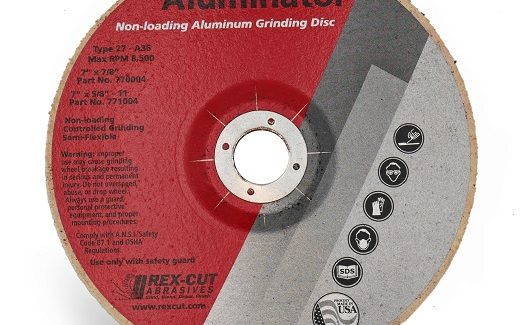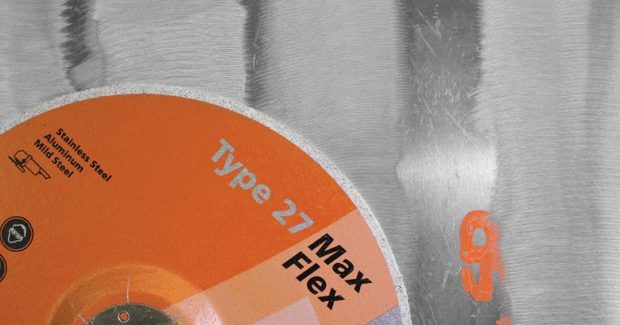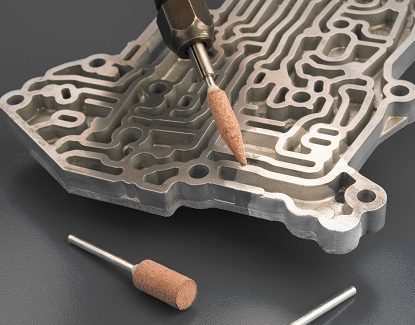How to Make Grinding Aluminum (Everyone’s Least Favorite Job) Less Time Consuming
When grinding aluminum, aluminum oxide grain is the standard. Make the time to match the best bond for your application because the bond used in manufacturing an abrasive wheel has a remarkable impact on the wheel performance.
Posted: December 13, 2021
SURFACE CONDITIONING
By Kate Reilly
Aluminum usage is on the rise thanks to its unique benefits including durability, light weight, and natural corrosion resistance. But if you’re beveling, grinding, finishing, or deburring this versatile metal, it’s probably caused you a headache or two.
The good news is new technology in abrasive manufacturing has brought significant advancements to aluminum grinding products. From grinding wheels to mounted points, abrasives are being reformulated to suit the specific needs of grinding aluminum.
KEEPING IT CLEAN
Loading is the number one problem when finishing aluminum, but new abrasives are making this issue a thing of the past.
One complaint we hear from fabricators working with aluminum is the need to take extra time to thoroughly clean lubricant residue from work surfaces after grinding. This happens from either waxes used in conjunction with grinding wheels or grinding aids added to the structure of the abrasive product.
Using a general-purpose grinding wheel with added waxes will only add unnecessary time to the job. There are wheels on the market today that will grind, blend, and finish aluminum without any added lubricants, giving fabricators the ability to grind and move on to the next step without stopping to clean their workpiece.
SELECTING BONDS AND SAVING STEPS
Going from weld to final finish in the least steps possible is a common goal. Taking time to home in on the correct abrasive combination for specific metals and applications can drastically increase productivity. The best place to start is looking at grain/bond combinations.
When grinding aluminum, aluminum oxide grain is the standard. Specialty abrasive grain is an overkill due to aluminum being a softer metal. But taking the time to match the best bond for your application is a great investment.
The bond used in manufacturing an abrasive wheel has a remarkable impact on the wheel performance. The same abrasive grain can give different results depending on the bond.
- Resinoid wheels are tough and used for rough grinding applications. The abrasive grain is combined with phenolic resin to create resinoid products.
- Cotton fiber wheels are composed of embedded abrasive grains in non-woven cotton fabric. As the cotton wears down the wheel will constantly reveal more abrasive grains allowing for a consistent cut rate and finish. More controlled metal removal than resinoid, but more aggressive than unitized.
- Unitized wheels are a web material embedded with abrasive grain that is combined into a resin slab. They are often used for very light metal removal and finishing applications.
Selecting an overly aggressive wheel for aluminum has the potential of gouging the work. While starting with too soft of a bond, especially for weld removal, will increase your grinding time. Experimenting with different bond types will give you the knowledge to reduce errors, eliminate unnecessary steps, and save time grinding.
CONSISTENCY, CONSISTENCY, CONSISTENCY
Operators often turn to flap discs for controlled metal removal. But when it comes to aluminum, you can easily run into consistency issues. Often a disc will give excellent metal removal at first, but after a while the grinding ratio diminishes. For consistency and longevity, we recommend using a grinding wheel for weld removal then a blending wheel to reduce scratches and leave a paintable finish. At Rex-Cut we use the Aluminator followed by Max Flex 54 grit. If a finer finish is required, unitized is a great third step.
TRIAL AND ERROR
Keeping your mind open to new abrasive products can benefit production. Testing new and different abrasive products during downtime will give you product knowledge and improve your finishing procedures. Your own research can go a long way.
CONTACT THE MANUFACTURER
If you have a difficult application and you are having trouble finding the best abrasive for the job, contact your abrasive manufacturer. They might be able to assess the situation and recommend something you haven’t thought of. Hearing feedback from end-users also helps us make better abrasives tailored to your needs.







